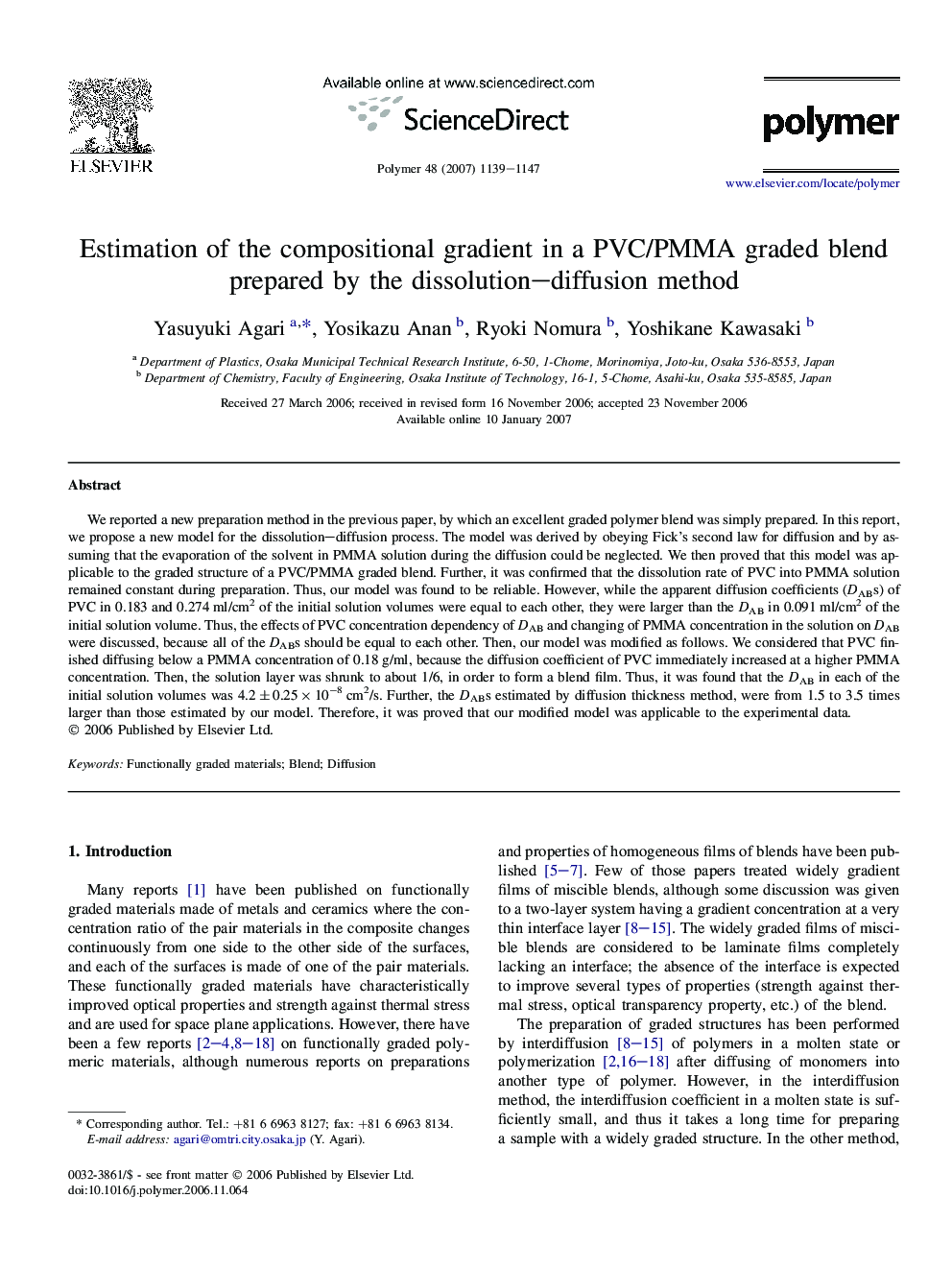| Article ID | Journal | Published Year | Pages | File Type |
|---|---|---|---|---|
| 5188961 | Polymer | 2007 | 9 Pages |
We reported a new preparation method in the previous paper, by which an excellent graded polymer blend was simply prepared. In this report, we propose a new model for the dissolution-diffusion process. The model was derived by obeying Fick's second law for diffusion and by assuming that the evaporation of the solvent in PMMA solution during the diffusion could be neglected. We then proved that this model was applicable to the graded structure of a PVC/PMMA graded blend. Further, it was confirmed that the dissolution rate of PVC into PMMA solution remained constant during preparation. Thus, our model was found to be reliable. However, while the apparent diffusion coefficients (DABs) of PVC in 0.183 and 0.274 ml/cm2 of the initial solution volumes were equal to each other, they were larger than the DAB in 0.091 ml/cm2 of the initial solution volume. Thus, the effects of PVC concentration dependency of DAB and changing of PMMA concentration in the solution on DAB were discussed, because all of the DABs should be equal to each other. Then, our model was modified as follows. We considered that PVC finished diffusing below a PMMA concentration of 0.18 g/ml, because the diffusion coefficient of PVC immediately increased at a higher PMMA concentration. Then, the solution layer was shrunk to about 1/6, in order to form a blend film. Thus, it was found that the DAB in each of the initial solution volumes was 4.2 ± 0.25 Ã 10â8 cm2/s. Further, the DABs estimated by diffusion thickness method, were from 1.5 to 3.5 times larger than those estimated by our model. Therefore, it was proved that our modified model was applicable to the experimental data.
